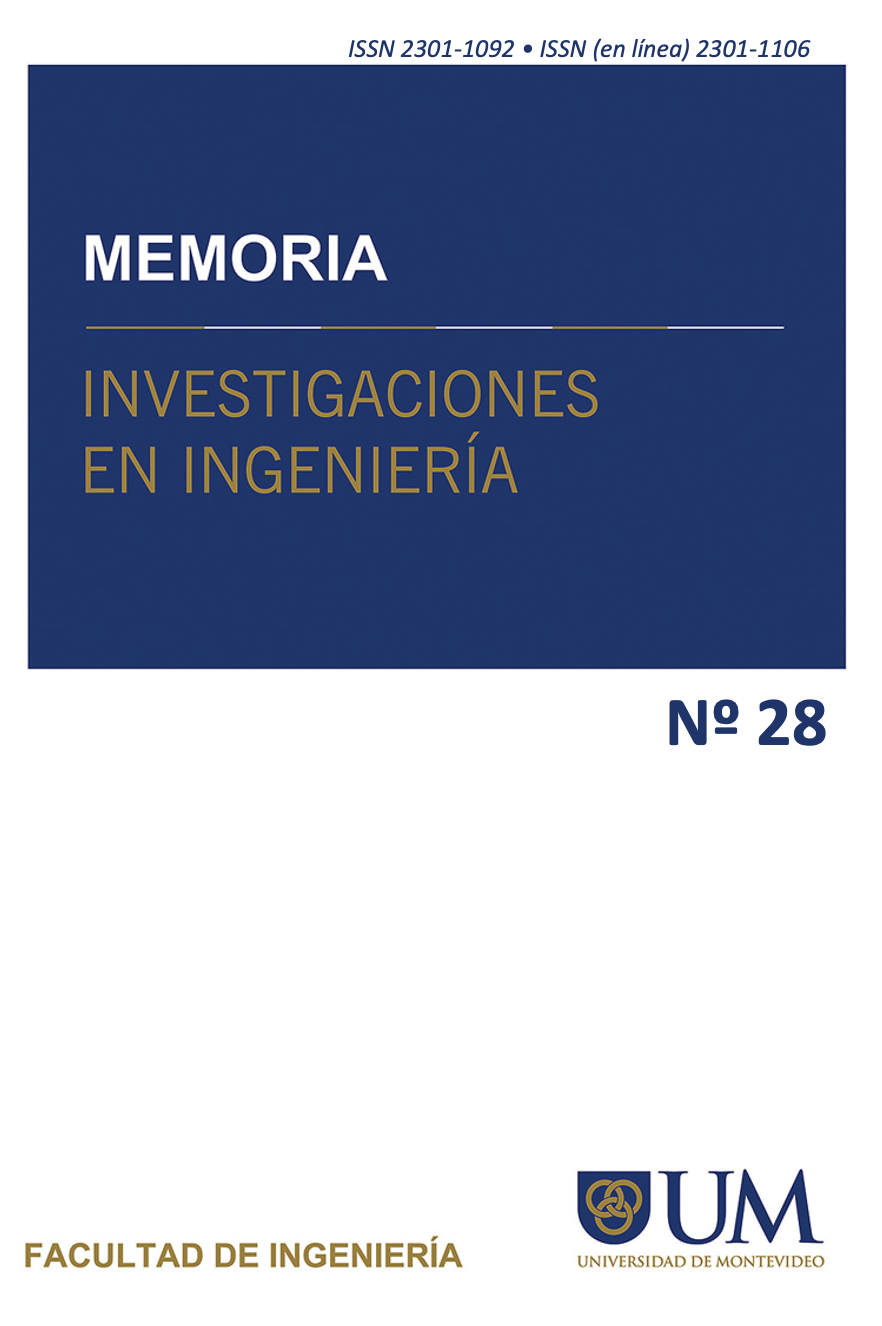Post Weld Quenching Impact on Microstructure and Mechanical Properties (Tensile, Impact, Hardness) of High Strength Low Alloy Steel
DOI:
https://doi.org/10.36561/ING.28.5Keywords:
Tensile strength, Hardness, Impact strength, SMAW, High strength low alloy steel, Quenching mediaAbstract
Shielded Metal Arc Welding (SMAW) is the most widely used welding technique in engineering industries. Compared to other arc welding techniques like TIG, SMAW is less heat-concentrating. However, welding thick jobs using SMAW can result in serious issues such as structural distortion due to non-uniform input heat distribution. High thermal stresses and distortions can degrade mechanical properties, similar to high input heat. Fast heat removal may prevent such defects, and different quenching media like sand, water, and oil were used to investigate variations in mechanical properties. High-strength low-alloy steel was selected due to its good weldability and easy availability, which makes it suitable for many industrial applications, such as in the space and defense industries. The tensile testing results showed that oil quenching was superior to other quenching techniques because oil-cooled joints had the highest tensile strength and ductility. However, water-cooled joints showed the highest yield strength, but oil-quenched joints had the highest welding efficiency. The hardness of water-cooled joints in the heat-affected zone and weld zone was greater due to rapid cooling in water. The impact energy of oil-cooled joints in the heat-affected zone was superior to that of other joints. Overall, the mechanical properties of oil-cooled joints were superior and showed better geometric configuration, such as minimal distortions.
Downloads
References
R.S.Parmar, “Welding engineering and technology”, Published by Khanna Publishers, Delhi, 2005.
Sindo Kou, “Welding metallurgy” second edition, Wiley interscience publication, 2003.
A. Shazad, J. Jadoon, M. Uzair and M. Akhtar, "Effect of composition and microstructure on the rusting of MS Rebars and ultimately their impact on mechanical behavior," Transactions of the Canadian Society for Mechanical Engineering, 2022.
L. Srinivasan, T. Deepan Bharathi Kannan, and P. Sathiya, “Effect of heat input, heat treatment on microstructure and mechanical properties of GTA welded aerospace material 15CDV6”, Journal of materials research, Apr 2017. https://doi.org/10.1557/jmr.2017.70
A. Shazad and M. Uzair, "Effect of quenching medium on the strength and hardness of 15CDV6 steel welded joints produced by argon arc welding," Metallurgy and Heat Treatment of Metals, vol. 11, pp. 45-45, 2024.
A. Shazad, M. Uzair, and M. Tufail, "Influence of multiple post-weld repairs on mechanical and microstructural properties of butt weld joint utilized in structural members," International Journal of Precision Engineering and Manufacturing, pp. 1-8, 2024.
P. N. Kumar, Y. Bhaskar, P. Mastanaiah, and C. V. S. Murthy, "Study on dissimilar metals welding of 15CDV6 and SAE 4130 steels by inter pulse gas tungsten arc welding," Procedia Materials Science, vol. 5, pp. 2382-2391, 2014.
M. C. Sekhar, D. S. Rao, and D. Ramesh, "Welding development in ESR modified 15CDV6 material," International Journal of Mechanical Engineering and Robotic Research, vol. 3, pp. 499-504, 2014
S Sapthagiri, K Jayathirtha Rao, K Ashok Reddy & C Sharada Prabhakar, “Comparison of Mechanical Properties on 15CDV6 Steel Plates by TIG- Welding with and without copper coated filler wires” International Journal of Advanced Research Foundation, www.ijarf.com, Volume 2, Issue 5, May 2015.
Rami Rafea Abdul-Ameer , Saad Hameed Al-Shafaie, Abdul sameea Jasim Jilabi, “ Controlling distortion in gas metal arc high strength low alloy steel welds” Materials Today: Proceedings, June 2021, https://doi.org/10.1016/j.matpr.2021.06.010.
Srivastava S, Garg RK. “Process parameter optimization of gas metal arc welding on IS: 2062 mild steel using response surface methodology” Journal of Manufacturing Process, 2017;25:296–305. https://doi.org/10.1016/j.jmapro.2016.12.016.
Li C, Wang Y, Han T, et al. “Microstructure and toughness of coarse grain heat-affected zone of domestic X70 pipeline steel during inservice welding” Journal of Material Science, 2011;46(3):727–733. https://doi.org/10.1007/s10853-010-4803-y.
Eroglu M, Aksoy M. “Effect of initial grain size on microstructure and toughness of intercritical heat-affected zone of a low carbon steel” Material Science Engineering A. 2000;286(2):289–297. https://doi.org/10.1016/s0921-5093(00)00801-7.
Bijaya Kumar Khamari, Soumya Sobhan Dash, Swapan Kumar Karak, Bibhuti Bhusan Biswal, “Effect of welding parameters on mechanical and microstructural properties of GMAW and SMAW mild steel joints”, iron making and steel making, Sep 2020.
Ruming Geng, Jing Li, Chengbin Shi , Jianguo Zhi, Bin Lu, “Effect of Ce on microstructures, carbides and mechanical properties in simulated coarse-grained heat-affected zone of 800-MPa high-strength low-alloy steel”, Materials Science and Engineering:A, Apr 2022,
A. Narwadkar, and S. Bhosle, “Optimization of MIG welding parameters to control the angular distortion in Fe410WA steel”. Journal of Materials Manufacturing Processes. 2016. vol. 31. Pp. 2158-2164, doi:0.1080/10426914.2015.1127939.
P. Adamczuk, I.G. Machado, J.A. Mazzaferro, “Methodology for predicting the angular distortion in multi-pass butt-joint welding”, Journal of Materials Processing and Technology. 240 (2017) 305–313, https://doi.org/10.1016/j.jmatprotec.2016.10.006.
Wei Liang, Dean Deng, “Investigating the influence of external restraint on welding distortion in thin plate welded structures by means of numerical simulation technology”, Journal of Physics. Conference. Ser. 1063 (2018) 012082, https://doi.org/10.1088/1742-6596/1063/1/012082
A. Shazad, M. Astif, M. Uzair, A. A. Zaidi, “Evaluation of preheating impact on weld residual stresses in AH-36 steel using Finite Element Analysis,” Memoria Investigaciones en Ingenieria 26 (2024) 225–243
M. Anis, W. Winarto, “Effect of plate thickness and weld position on distortion and residual stress of welded structural steel”, Material. Sci. Forum 689 (2011)296–301 https://doi.org/10.4028/www.scientific.net/msf.689.296
M. Islam, A. Buijk, M. Rais-Rohani, K. Motoyama, “Simulation-based numerical optimization of arc welding process for reduced distortion in welded structures”, Finite Element in Analysis and Design. 84 (2014.vol,) 54–64 https://doi.org/10.1016/j.finel.2014.02.003
A. Shazad, M. Uzair, T. Jamil, N. Muhammad, "A Comparative Study on the Joint Hardness and Tensile Properties of Dissimilar Aluminum Alloy using Tungsten Inert Gas (TIG) Welding," in 4th Int. Conf. Key Enabling Technol. (KEYTECH 2024), Atlantis Press, pp. 173-178, Dec. 2024.























